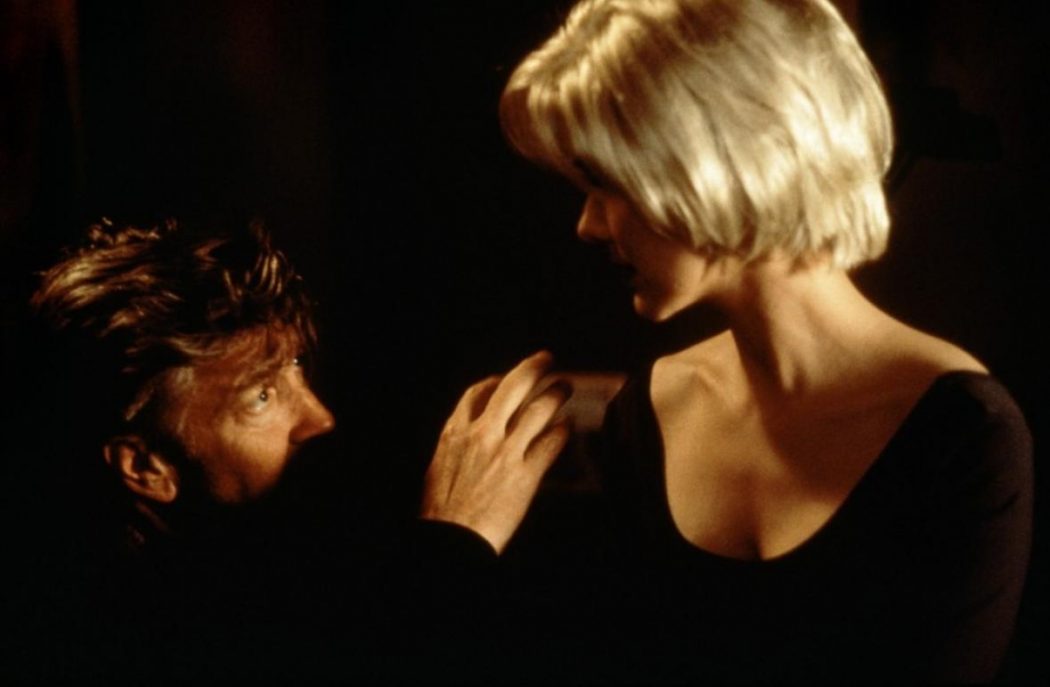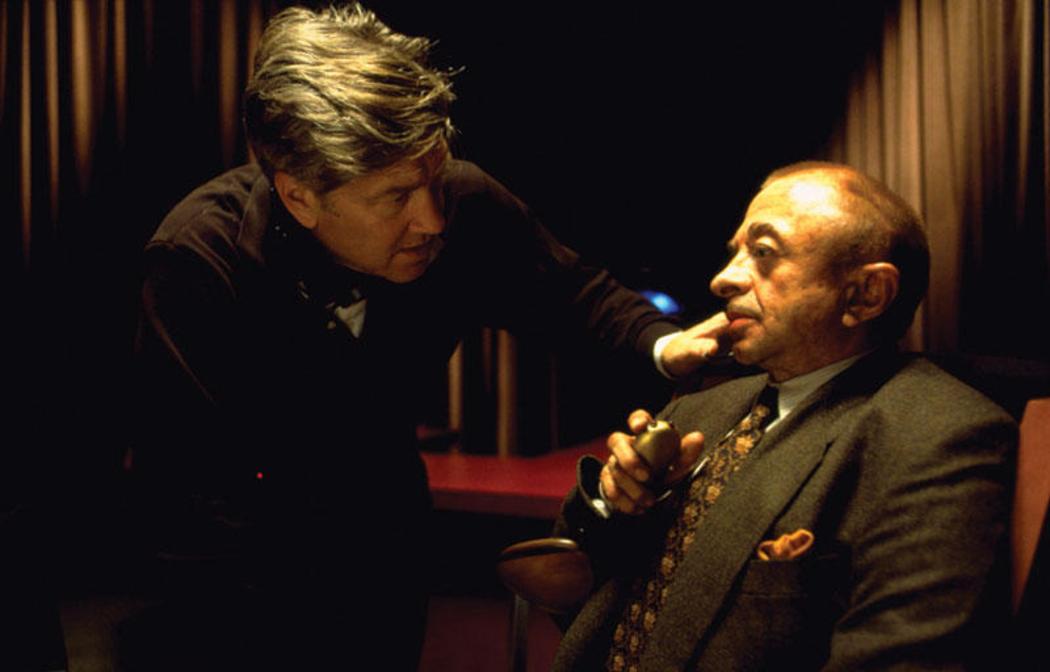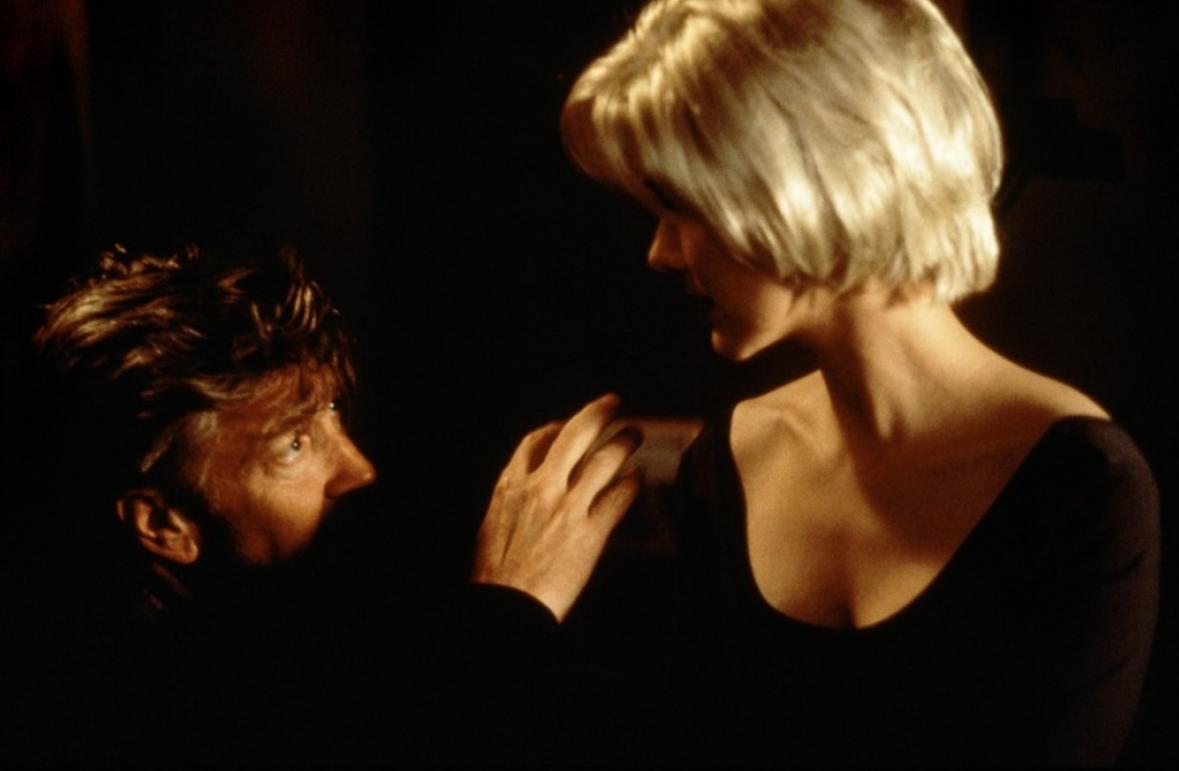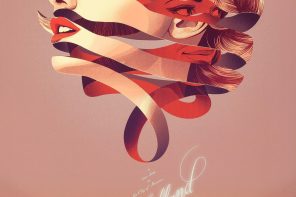There are movies that seriously scare us. Some films we’ve seen left us not only in a panicked state in the theater, but continued their grueling grip on our psyche even after returning home, to the safety of our beds and within the comforting boundaries of locked doors, closed windows and neatly prepared baseball bats. But the nightmares usually wear off in a matter of nights, as we keep telling ourselves it was only a movie, as we all too happily convince ourselves we live in a better, safer, more normal world than the one we’d seen on the screen. The nightmares usually wear off. Not in the case of Mulholland Drive, though. At the very beginning of the new millennium, one of the greatest masters of the uncanny, David Lynch, made Mulholland Drive, a mysterious hybrid of genres, a tale of love and revenge of bizarre, seemingly incomprehensible structure, a terrific—and terrifying—film that stubbornly resists being called a horror film, even though it’s as dreadful and unsettling as anything recorded on the celluloid so far. Initially developed as a pilot for a new ABC’s series, upon cancellation the material was transformed into a feature film of a title that could hardly be any more appropriate. Mulholland Drive is the road that connects Los Angeles with the San Fernando Valley, a mysterious path full of curves, winding around the dark and ominous Hollywood Hills, and as such corresponds to the puzzling structure of the film itself, which dances on the verge of neo-noir mystery, psychological thriller, classical whodunit, a highly artistic horror film, with narrative curves and free falls. The beauty of Lynch’s work is that it can’t be easily classified or stuffed into a drawer with a label on it. Part of the captivating attraction of Mulholland Drive is that such labeling is completely impossible, just as it’s fascinatingly repellent to any bulletproof interpretation. It a film situated firmly on the thin boundary between thriller and horror, a dreamlike story sown out of intimate fears, demons and desires of the heart and mind. Lynch created a nightmarish vision of Hollywood as only he could have done, a movie so studiously glued together piece by piece that at the same time everything fits perfectly and literally nothing fits at all.
With Naomi Watts and Laura Harring’s best career roles, with Angelo Badalamenti’s dread-inducing tones, with Peter Deming’s dark, film noir cinematography, Mulholland Drive is David Lynch’s best work. If this by itself doesn’t say enough, and considering the filmmaker’s career—it should, trust our judgment when we say this: Mulholland Drive is certainly one of the best films of the century so far and a clear definition of a must-see work of art.
A monumentally important screenplay. Dear every screenwriter/filmmaker, read David Lynch’s screenplay for Mulholland Drive [PDF]. (NOTE: For educational and research purposes only). The DVD/Blu-ray of the film in new, restored 4K digital transfer, supervised by director David Lynch and director of photography Peter Deming, is available at the Criterion Collection. Absolutely our highest recommendation.
 Loading...
Loading...
‘MULHOLLAND DRIVE’: REALITY IS THE TRUE NIGHTMARE
After the frustrating fallout of Twin Peaks, the negative reception and subsequent cancellation of another Frost/Lynch TV project, a 1992 sitcom On the Air, David Lynch vowed never to do television again. Despite his promise, he was convinced seven years later to do a TV pilot for ABC by Tony Krantz, the same agent who had persuaded Lynch and Mark Frost to work and create Twin Peaks. Lynch had shot the 90-minute pilot called Mulholland Drive and showed it to the ABC producers who have—not surprisingly, since Lynch had already received countless notes during filming about, among other things, the moral implications of characters smoking cigarettes—discarded the project. Lynch amusingly tells the story of an ABC executive seeing the pilot at 6 a.m. in the morning, standing up and drinking coffee; practically the worst kind of a way to experience a David Lynch project. One year had passed, and after it seemed that the pilot would be thrown into oblivion, French producers came into play to finance the conversion of the TV pilot into a feature film. The deal was made, the cast and crew came back to finish the thing, certain props and costumes have been salvaged after the majority had been lost, and additional 45 minutes of footage were shot. After this seemingly torturous process, the film was released to become one of Lynch’s most acclaimed films, and its reputation as a critical favorite was further asserted by a recent BBC poll of 177 critics from 36 countries that voted Mulholland Drive as the greatest film of the 21st century (so far).
The story of the filming went from a failure to a success. The story of the film arguably goes the other way around. Mulholland Drive indeed begins with success and recognition, derived from a dance of joy: a scene of a jitterbug contest, where the happy and fulfilled face of Naomi Watts is featured as the winner. After an unfocused camera hovers around the bed and zooms into a pillow, the dream begins: literal destruction and death follow with a car accident scene on the eponymous, mysterious road above Los Angeles. The thin line between accomplishment and failure is reflected in the journey of the main two (or is it four?) characters of Betty/Diane and Rita/Camilla, played by Watts and Laura Harring. Laura Harring’s character of Rita is the archetype of somebody who is at the deep end, descending into the dark belly of L.A. from the site of the car accident, setting the plot (the word “plot” is used here very loosely) into motion. In the vein of Lynch’s tributes to film noir, she passes under a Sunset Boulevard sign, and this reference might also be one of many clues in solving the mystery of the film. Billy Wilder’s Sunset Boulevard, one of Lynch’s favorite films of all time, is in many ways a sibling of Mulholland Drive: both movies are scathing criticisms of Hollywood and its destructive relationship toward talent, ambition, and enthusiasm. Sunset Boulevard has the iconic Gloria Swanson playing Norma Desmond (note that both “Norma” and “Desmond” are characters in Twin Peaks, while Lynch himself in the series plays the FBI Deputy Director Gordon Cole, a name taken from a small character in Sunset Boulevard—it is obvious that Wilder’s work carries a huge influence on the director), an aging movie star of the silent era, neglected and abandoned by the film industry, where many of her peers and creative minds have long since moved on to the era of “talkies” (the famous quote from Norma: “We didn’t need dialogue, we had faces!”), mimicking Swanson’s own career as a silent movie star, although the irony now is that this talkie became with time Swanson’s most famous role. Norma is desperate to retake the old limelight and to possess the role of a lead thespian once more, not only for vanity, but for a sense of purpose. Her possession is not limited to that aspect alone: Norma’s increasingly destructive and obsessive relationship with the writer she hired to polish her screenplay that she believes will bring her back to the heights of Hollywood ends very badly, and the ending of the story has Norma still trapped in delusions of grandeur, pinned to long gone days of fame, ready in a farcical manner for her close-up which had her expressive, unforgettable face on tens of thousands of screens around the globe.
The tragedy of the main heroine in Mulholland Drive is greater because there never was a close-up to begin with.
Sunset Boulevard may have its share of similarities with Lynch’s nightmarish version of Hollywood, but there are also many differences. Wilder’s themes revolve around a character who is not being able to let go, on the seductive dangers of nostalgia, on the cruel certitude of aging, on the fact that the glory days are over and there is nothing left in one’s life that could make up for those old times, resulting in bitterness and loneliness. The main protagonist of Mulholland Drive shares those nasty character traits, but what makes Lynch’s story more tragic and desperate is that there are no memories of past triumphs to cling to, no achieved heights to look up to even if they were long buried in the past, no glimpses of ambitions once accomplished. What is left is the monster behind the diner, carrying a blue box of illusion, penetrating the dreams of others when its own were not fulfilled.
This particular demonic apparition appears in one of Lynch’s more disturbing, anxiety-causing sequences, taking place in a diner called Winkie’s of all places. Patrick Fischler, the memorable character actor, is convincingly frightened of a creature lingering behind Winkie’s, who is haunting his dreams, and is there a worse nightmare than fear of failure and unfulfillment? The dreamy and unnerving floating feel of the camera while filming Fischler’s face telling the story of his nightmares is only increasing the agitation, making the viewer sense how it feels in the skin of this petrified, poor soul. The scene ends in one of Lynch’s rare uses of jump scares, where the creature almost nonchalantly reveals itself to the dreamer who wanted to make sure that the nightmare isn’t there, except that it will always be present: reality is the true nightmare, and one should not face it with fear. A similar thing happens to Kyle MacLachlan’s Agent Cooper in the finale of the original series of Twin Peaks; the valiant hero succumbing to his fears in the Black Lodge and becoming the figure he wanted to annihilate, that being the dark mirror version of himself. Evil is a force in Lynch’s worlds, but it materializes in his protagonists, not outside of them.
The illusion of Mulholland Drive comes from the cynical disillusion of Diane Selwyn, the character Naomi Watts plays in the third act of the film. It is precisely in Winkie’s where Diane’s illusion is being created; Betty, her saintly mirror version of the first two acts sees a waitress carrying the name of Diane, and it is behind that center of creativity where the true Diane truly lies, in the shadows, behind the diner. Betty is talented, adorable, optimistic and eager to help a stricken and confused Rita, battered and amnesiac, literally mind-wiped by the mechanizations of Hollywood, personified through Michael J. Anderson’s (the dancing man from another place in Twin Peaks) omnipotent Mr. Roque. With Roque, Lynch creates the illusion of having a man of a huge body and proportionally small head, physically threatening but mindfully sparse, possibly reflecting Lynch’s opinion on certain film executives, ruling from a darkened, macabre studio which seems like a descendant of the Red Room from Twin Peaks with more office décor in a cold but colourful Edward Hopper/Francis Bacon fashion, supported by a creepy, motionless valet.
Lynch does not have time for subtle digs at those who impeach creative freedom and inventiveness, instead going right for the jugular: the story of the film director Adam Kesher, played with vigorous energy and a unique sense of self-deprecating humour by Justin Theroux, goes to darkly comic and deeply calamitous places, where the director loses the creative control over his film, his life consequently turning into a living hell because of his opposition and rebellion towards the studio executives, this time personified through two gangster-like brothers, one of whom—played by the great Angelo Badalamenti—is also notoriously picky about his coffee. After meeting the sinister, eyebrow-free and no-nonsense Cowboy, the Hollywood version of a fixer, Kesher decides to compromise in order to save what is left of his project; he capitulates to the greed, blackmail and intimidation of powerful forces within the land of dreams, casting a girl named Camilla Rhodes in his movie, despite his wishes.
Camilla Rhodes is another symbol of compromise and a sell-out, yielding idealism to greedy satiation of glamor, but also the main culprit of Diane Selwyn’s hopeless frustrations. The first two acts of the movie show through Kesher’s perspective how the system forces Camilla down the throat of creative minds, while Betty is discovered as being a fantastic acting talent, mesmerizing agents, fellow narcissistic actors and Kesher himself, who seems enamored purely by seeing Betty for a short period of time. The third act of the film offers a different perspective: Camilla is indeed talented, and she has beaten Diane for a very important, career-making role. Most importantly, Diane is tragically in love with Camilla, and Camilla very cruelly does not reciprocate that feeling beyond sexual desire, humiliating her in the process in various awkward occasions.
The third act of Mulholland Drive, the so-called “reality” section of the film by the most popular interpretation (while the most common explanation for the first two acts is that it represents Diane’s dream, or purgatorial realm gone wrong as in the case of Lost Highway, or a heightened reality that cherry-picks certain real events from Diane’s life and wraps them around a biased and subjective interpretation of those events), may be Lynch at his most skilled, disciplined, emotionally resonant and fiercely dedicated. The anchor for this is Naomi Watts, delivering a performance that is still being talked and discussed among many Lynch fans and cinephiles in general, as one of the definitive female performances of the last twenty years. Ironically enough, it had helped that the majority of the first 100 minutes has been filmed as a TV pilot in one sequence, while the entirety of the final 45 minutes was completed a year later, since in the third act Watts seems not only emotionally but physically different—paler, gaunter, more ragged and completely cheerless. The transformation is as impressive as it is daunting, and Watts readily carries the baggage of Diane’s complete mental breakdown of somebody who was once innocent, charming and radiant. Matching the challenges of what Sheryl Lee had to face in Fire Walk with Me, Watts goes through the ordeals of desperation (the powerful scene of her crying to a vision of Camilla, cutting to a shot of herself at the same place looking exhausted and worn down), disgrace (the real masturbation sequence where Watts was somewhat justifiably screaming “Fuck you!” to David Lynch on set as a reaction to what he had asked the actress to do, to which the transcendental meditation—raised director only replied with “OK, Naomi!”) and humiliation (the Adam Kesher party sequence where Diane has to face a cruel and indignant break-up from Camilla). This last one is where stars align for Lynch to achieve an emotionally visceral sequence where Diane tells her story of failures, underachievements and missed opportunities, followed by a familiar visual motif of a condescending tap on the hand (remember Patricia Arquette tapping Bill Pullman’s shoulder in Lost Highway?) from Adam Kesher’s mother and a tear falling from Watts’ eye in the exact moment the announcement of Camilla/Kesher engagement is being made.
The critics of bifurcated dream/reality interpretation note that this may be an oversimplification of Lynch’s ideas. But the question which brings further compelling analyses in Mulholland Drive isn’t if the first 100 minutes is a dream, but why Diane dreams that which she dreams, and which parts of the illusion are more “real” than others. Take the hitman for instance. In the first, lighter half of the film, the hitman serves as a comic relief, being buffoonishly inept. In the second, “reality” part, the hitman is ruthless and competent. The first part has an old couple welcoming Betty to the heavenly Los Angeles almost as guardian angels; the second part has that same old couple as diabolical avenging angels, products of her own subconscious and dark id (the monster behind the diner creates them out of the blue box which creates the fantasy of the first two acts)—symbols of conscience leading Diane to her suicide. The mysteries of the film are summarized in one of the most indelible set pieces of Lynch’s career—the Club Silencio sequence, where masterful, hypnotic Badalamenti score (Badalamenti, in general, is in amazing form here, both in the ominous main synth score and in the harrowing orchestral themes in the second half of the movie) accompanies a flamboyant performance by Richard Green as the Magician, the presenter at the club, explaining in enigmatic exposition (a true oxymoron) that it is “all an illusion” and signifying in that exact moment, where Betty/Diane starts shaking and Rita/Camilla holds her, two main characters switching places between the observer and the observed: where Betty was the stable anchor before in their relationship, Diane is now the victim. This is followed by another one of Lynch’s memorable musical sections, where Rebekah Del Rio sings the Spanish-language cover of Roy Orbison’s Crying, epitomizing the central theme of unrequited love. For Diane, trust was put in a parasitic system of greed-driven Hollywood that is consistent only in its treachery, while a loving person in the meantime yields and becomes part of that same parasite.
Lynch had called the movie a love story and a story of finding one’s identity. This is one of Lynch’s darkest stories; even Laura Palmer in Fire Walk with Me gets her angel in the end, while Diane Selwyn finds out who she is after a failed identity switch (akin to Fred Madison in Lost Highway) and finds no consolation in that. But despite the characters’ tribulations and the film’s cynical tone of Hollywood, the exceptional filmmaking, the evolving and never creepier sound design, and a combination of the surreal, bizarre elements of Blue Velvet and human resonance of The Straight Story make Mulholland Drive one of the most rewarding Lynchian experiences. Lynch often says that his films tend to be full of questions and not offering answers because life itself is like that. Mulholland Drive has a lot to offer with its unsolvable mysteries, providing a perspective on life and the human condition, the biggest mystery of them all.
Written by Lovorko Marić
On the way to Mulholland Drive is a short making-of documentary with interviews of David Lynch, Naomi Watts, Laura Harring, Justin Theroux, Angelo Badalamenti and shots from the Mulholland Drive set.
Here’s a rare behind the scenes footage of the making of Mulholland Drive.
A photographer who has worked across multiple genres and styles, and for multiple legendary directors, Peter Deming is a consumate professional. Really there’s just one key thing about Peter everyone should know: the man shot Mulholland Drive. The great folks at Craft Track were lucky to speak with him and get his take on shooting and some of the on-set stories he has to offer.
David Lynch on Mulholland Drive.
David Lynch, the lead actors and Angelo Badalamenti talk about the film and the making of it at the Cannes Film Festival in 2001.
“Jimmy Stewart on Mars” was how Mel Brooks, who produced The Elephant Man, described David Lynch. The collision between the quotidian and the dreamlike has been Lynch’s key theme, from the suburban nightmares of Blue Velvet and Twin Peaks to the noir netherworlds of Lost Highway and Mulholland Drive. In this discussion, just before the 1997 release of Lost Highway, Lynch demonstrates his aversion to interpretation, preferring to let viewers take what they will from the mood and texture of his films. He reveals his method of working by instinct and embracing the role of chance in his creative process.
Beautiful, bizarre and strangely addictive, the film begins as a botched hit results in the meeting of brunette amnesiac Rita (Laura Harring—Love in the Time of Cholera) and blonde would-be Hollywood actress Betty (Naomi Watts—Birdman, 21 Grams). Taking the viewer on a memorable neo-noir trip through Hollywood’s dark underbelly, Lynch dispenses with a conventional narrative in favour of a hallucinogenic assault on the senses that will stay with you long after the credits roll.
Here are several photos taken behind-the-scenes during production of David Lynch’s Mulholland Drive. Production still photographer: Melissa Moseley © Les Films Alain Sarde, Asymmetrical Productions, Babbo Inc., Canal+, The Picture Factory. Intended for editorial use only. All material for educational and noncommercial purposes only.
Get Cinephilia & Beyond in your inbox by signing in




























